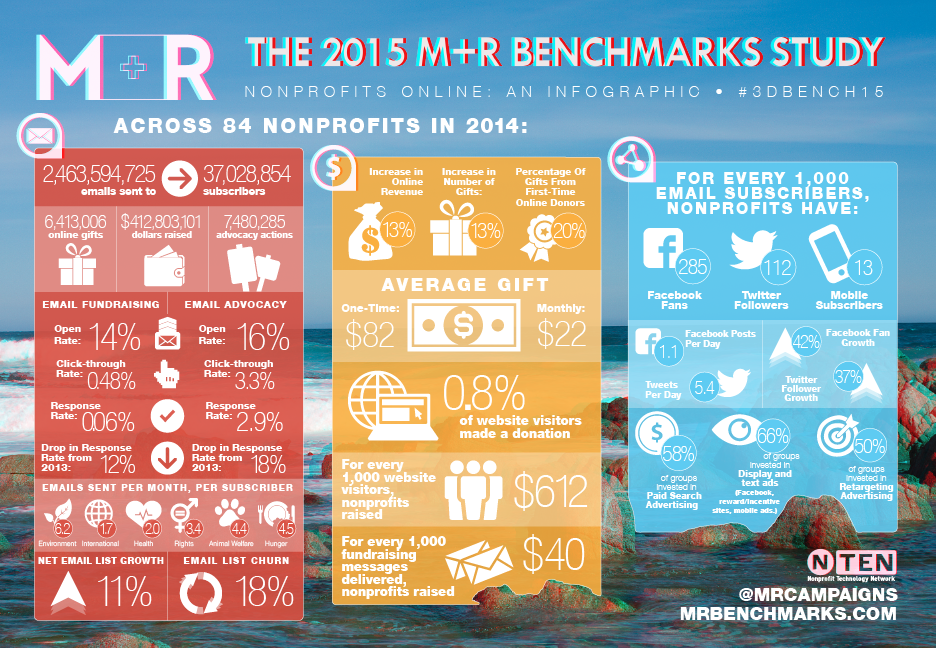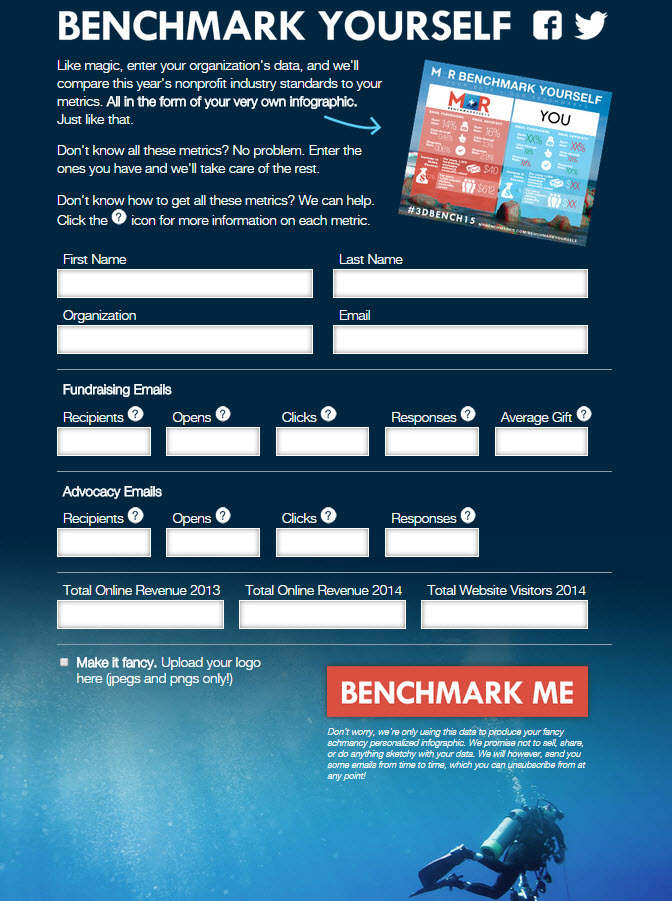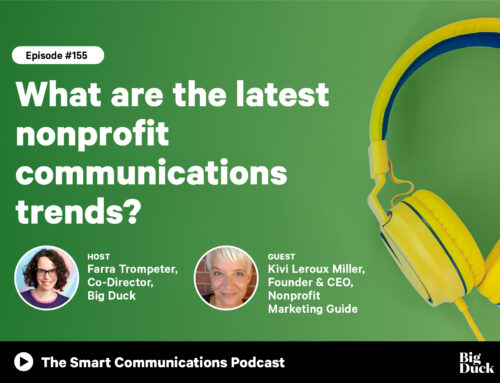
Wonder where we get numbers like a typical email open rate for nonprofit e-newsletters, or estimates of how much money you could be raising online?
One of those sources is the M+R Benchmarks Study, and the new edition is now available.
Here are a few highlights:
Online revenue is up! Online revenue increased by 13 percent from 2013 to 2014 for the groups in the study, thanks to a 32% increase in monthly giving and 16.6% increase in web traffic.
More gifts in smaller amounts. Nonprofits are reaching more people, but their average donation is smaller. The average online one-time gift was $104 and monthly gifts were $23 for participants in our study last year. For every 1,000 web visitors, participants raised $610 – that’s 61 cents per visitor, down 12 percent from the year before.
Forty bucks and 29 actions. If you’re like the groups in this study (doubtful, see caveat below), that’s how much money you’ll raise and the number of actions your supporters will take for every 1,000 fundraising and advocacy messages you send.
Audiences on social media are growing faster than email – but email still reaches a lot more supporters. For every 1,000 email subscribers, our participants had 285 Facebook fans and 112 Twitter followers.
About three quarters of nonprofits are investing in paid marketing online, including paid search, retargeting, and text and display ads. And many organizations are investing big bucks — 16% of respondents spent $100,000 or more in paid search alone last year.
And here’s one more cool thing: They are helping you do the math with your data and creating your own version of the infographic!
Check out the Benchmark Me! feature . . .
I always share one caveat with this report: It’s based on data from what most of our readers would consider HUGE organizations, like AARP, Planned Parenthood, Human Rights Campaign and the Wildlife Conservation Society. Doesn’t mean it isn’t fabulous stuff, but your small nonprofit may find it tough to see yourself in the data. “Small” in this report means orgs with emails lists under 100,000 names, and Facebook and Twitter followings under 25,000. You aren’t “large” until you have an email list over 500,000 and over 100,000 social media followers. Even with that caveat, these numbers are great places to start the conversations in your office, regardless of your size.


![12 Things You Can Stop Doing Right Now [Infographic]](https://www.nonprofitmarketingguide.com/wp-content/uploads/2025/01/Stop-Doing-2025-Info-hung-up-500x383.png)




